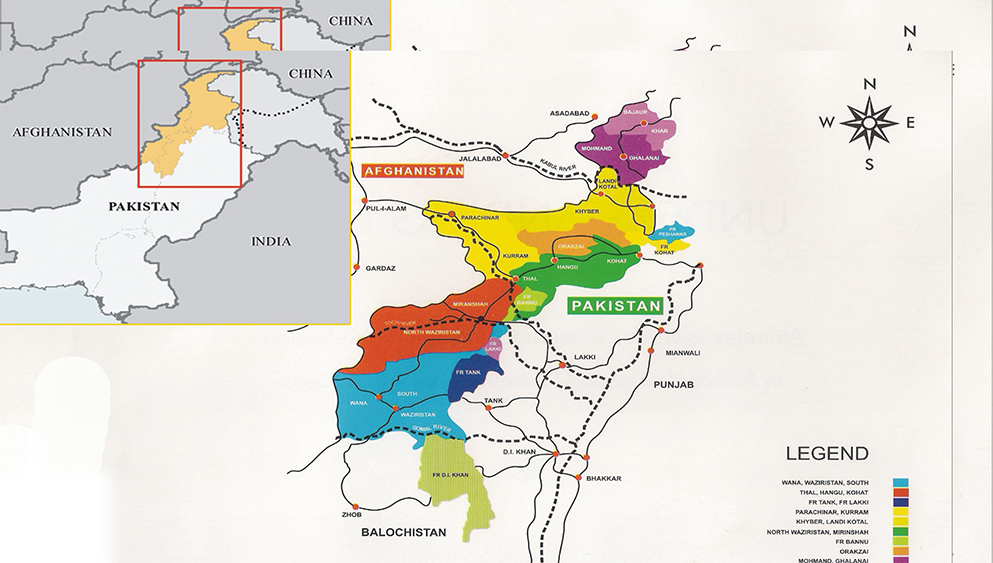After the historic merger of Khyber Pakhtunkhwa (KP) and FATA on Friday, South Waziristan has seen an outbreak of turbulence. On the afternoon of Sunday, June 3th 2018, a conflict occurred between members of the Peace Committee and the Pashtun Tahaffuz Movement (PTM) in Wana, South Waziristan resulting in three deaths and over a dozen wounded. According to local sources and the DG ISPR, the tussle broke out after PTM activists began anti-state chants and slogans upon which Peace Committee members attempted to stop them and soon after firing broke out.
Meanwhile, on the same day in Bajaur Agency, two security personnel were injured in firing by unknown militants from across the border. In addition, earlier on Saturday a protest was held in Mirali, North Waziristan against the targeted killing of a political Moharrar and three Khasadar personnel in Miramshah. In the same area, eight people also fell victim to targeted killing; moreover, unknown militants have blown up two girls’ middle schools and distributed handwritten leaflets directing parents to not send girls to schools, threatening dire consequences on failure to heed the warnings.
These incidents highlight the critical situation in the tribal belt that needs to be addressed by the government and the state. After the merger between KP and FATA, it is vital for the tribal belt to experience peace and stability if reform efforts are not to be derailed. Though the merger will empower the Pashtuns in the northwest of the country, the repeated hostilities between the PTM and pro-state activists can endanger peace efforts. This can also lead to alienation of the Pashtuns and repeating the cycle of conflict in the northern and northwestern regions of Pakistan. Owing to the vital nature of circumstances upon which hinges the stability of the entire region, the government of KP should start close talks with the tribal elders of different agencies comprising the former FATA. The latter have already taken notice of the PTM-Peace Committee clash in a jirga and decided to forbid Peace Committee members from entering Wana Bazaar till June 26th It was also decided that the Frontier Corps personnel and a 120-member local committee comprising elders would oversee the area’s security. For greater internal stability it is suggested to give greater rein to local policing authorities like the Khasadars and Levies in the region, at least in the interim period during the merger.
Though internal and external stakeholders especially those across the eastern and western borders may attempt to destabilize the region for geopolitical ends – the linkages between the agencies and the province of KP must be strengthened. External maneuvering has been all the more visible in different parts of the country such as Balochistan, South Punjab, Gilgit Baltistan and now the tribal belt. These occurrences of unrest and civil discord shed light on external destabilization efforts and the ad-hoc policy of Afghanistan’s NDS to create a buffer zone between the two countries spanning the Makran coast to the northern frontier of Pakistan.
Though these efforts have been hindered by the state of Pakistan in various operations, there is a likelihood for the reoccurrence of these incidents. After the announcement of the merger, it is imperative for the state to deter such destabilization efforts in the area mainly by preemptively addressing the grievances of the regional populace. The government should also proceed quickly in initiating legal, socioeconomic, political and educational reforms in the tribal region, keeping in mind the wishes of the people, especially the youth which comprises the majority of the population in the tribal belt.
